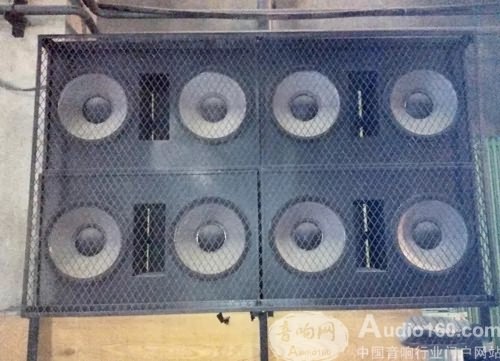Many people think that professional audio is very complicated and error-prone, especially for large-scale song and dance performances, major conferences, and so on. Even experienced audiophiles will make mistakes when they meet important people. If you say it in this respect, it is really difficult.
However, this kind of difficulty is only the problem side. For most audiophiles, the most difficult thing is to know the so-called professional audio: use a "multimeter" to measure the power of the speaker, or use the "sound pressure meter" to adjust the loudness of the venue. Wait, the leaders thought they were very professional, but they couldn’t tell the difference in the microphone.
In this way, we have to correct some basic conceptual errors, let us first correct a concept before determining past mistakes: professional audio is definitely not equal to home audio. There is a fundamental difference between the two! All of our discussions are in the professional audio range, and more specifically we only discuss the sound reinforcement at high power.
The professional speaker and the civilian speaker are different in the bass, the bass of the civilian box is heard, and the bass of the professional box is felt. What is the feeling, he is the vibration of the air, conveyed to us, we feel the air waves, this feeling is very special. Just like at the bottom of the water, we hear a lot of sounds. To feel this bass, the requirements for the cabinet are particularly high.

At high power, to achieve perfect sound, we must focus on solving:
The first is box vibration. Because the vibration of the box will cancel the sound pressure at a certain frequency, causing distortion; the other box vibration is the worst, it can emit a specific geometric noise, which is like the sound of two wooden boards colliding with each other. Of course, this noise is caused by the wood board and the production process. For example, the wood board is easily deformed/the production process is backward/the wood board is not straight when it is cut into small pieces, but it is jagged, which makes it impossible to be completely uniform during the gluing process. And the noise that appeared later.
The second is unit resonance. Why use an aluminum basin frame because of the different unit structure? There is nothing special in low power. At high power, due to the effect of sound waves, the surface of the speaker will vibrate somewhat (of course, the ideal speaker design, no vibration should be felt in any part of the speaker under high power). Fixed on the above unit, if the truss of the unit speaker is not strong enough, the bass frame will vibrate at the same time as the panel. At this time, the center position of the voice coil in the magnetic fluid will be destroyed, causing serious distortion and even rubbing. Circle, the last voice coil is blown.
In order to reduce the cost, some manufacturers use a very thin iron plate to make the speaker frame of the speaker, and the quality of the speaker is not good. This is one of the reasons. Usually we use 150WRMS power speakers for the thickness of the iron plate used in the basin frame can not be less than 1.2mm. Of course, the aluminum basin frame is the best, because the basin frame of the aluminum basin frame is cast rather than stamped, so its geometric deformation is much smaller than the stamped iron frame.
The third is the sound source, the so-called sound source. We often go to the ballroom, and the bass Bass heard is completely different from the recorded CD. This is not because the ballroom speakers are not good, (of course, there are also bad ones) but the sound source is wrong, specifically the radio method is wrong. Many years ago, we coached the live radio technology, how to collect the bass drum sound? The characteristics of the bass Bass radio. Here we just want to say that if you don't feel good bass in the ballroom, the first reaction is whether the DJ has been coached and should not doubt the quality of the speakers used.
Solar Charge Controllers manage voltage and current from solar panels to batteries, preventing overcharging and optimizing battery life for reliable energy storage.
Usage:
Solar charge controllers are used in off-grid solar power systems, such as solar street lights, solar water pumps, RVs, boats, and remote cabins. They are also used in grid-tied solar power systems with battery backup to manage the flow of electricity between the solar panels, battery, and grid.
Working principle:
Solar charge controllers work by monitoring the voltage and current from the solar panels and adjusting the charging parameters to maintain the battery at the optimal voltage level. When the battery is fully charged, the charge controller will reduce the charging current to prevent overcharging. Similarly, when the battery is low, the charge controller will increase the charging current to ensure the battery is properly charged.
Purpose:
The main purpose of a solar charge controller is to protect the battery from overcharging and discharging, which can reduce its lifespan and performance. By regulating the flow of electricity from the solar panels to the battery, the charge controller ensures that the battery is charged efficiently and safely. Additionally, solar charge controllers can also provide information on the performance of the solar power system, such as the amount of energy generated and stored in the battery.
solar controller mppt,solar charge controller,mppt solar charge controller,MPPT controller
Bosin Power Limited , https://www.bosinsolar.com